In 2008 the Royal Australian Mint released a second series (after the Ocean series) bringing colourful pad-printed designs to the standard 25mm, 9 gram aluminium bronze one dollar circulating coin size. The first releases of this Land Series (2008) were the Echidna, Rock Wallaby, Wombat and the Koala. This continued with the Bilby and Frilled Neck Lizard releases in 2009. This fun and vibrant dollar series presents appeal to younger collectors and incorporates fascinating native Australian animal facts. These reverse designs were all created by Sabina Foster. The coloured design is pad printed on a flat unstruck portion of the planchet with the "1 DOLLAR" and design background being struck on the coin. They all feature a proof obverse, the standard Ian Rank-Broadley effigy of Queen Elizabeth II. Released in an informative collector card these were issued at $14.95.
For the mintages of these issues please see the 2008 Issues and Mintages table and the 2009 Issues and Mintages table.
2008 Uncirculated Echidna
This dollar features the Australian native Short-Beaked Echidna snacking on it's favourite food, ants. It is a small spiny monotreme with long claws and a sticky tongue to collect ants and termites. It is found widespread throughout Australia. The Echidna lays eggs which hatch after 10 days and live in their mothers pouch for 50 days feeding on her milk. A baby Echidna is known as a puggle.
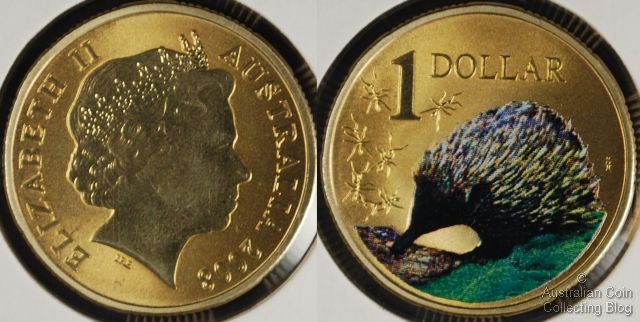
2008 Echidna One Dollar
2008 Uncirculated Rock Wallaby
A Yellow-footed rock wallaby sits comfortably on a rocky outcrop exposing his white underside, yellow forearms, feet and yellow striped tail on this coin design. These wallabies live in rock crevices and caves and can even climb sloping tree trunks. If sensing danger the rock wallaby will stomp the ground with it's hind leg as a warning.
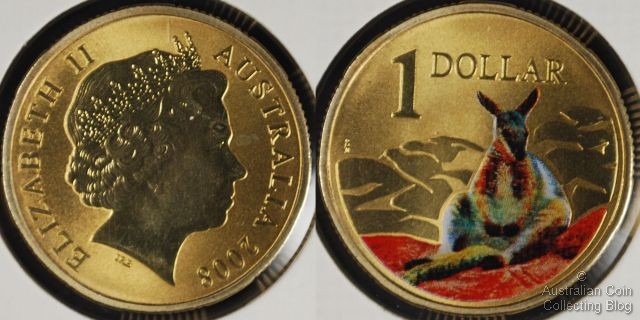
2008 Rock Wallaby One Dollar
2008 Uncirculated Wombat
This common wombat is shown emerging from a hollow log. It is a stout, sturdy marsupial with a large blunt head, short muscular neck and stubby powerful legs. It's found in south-eastern Australia grazing on native grasses, sedges, herbs, bark and roots. The wombat is a powerful digger moving obstacles in their path. The female wombat's pouch faces backwards to protect their young from debris whilst digging.
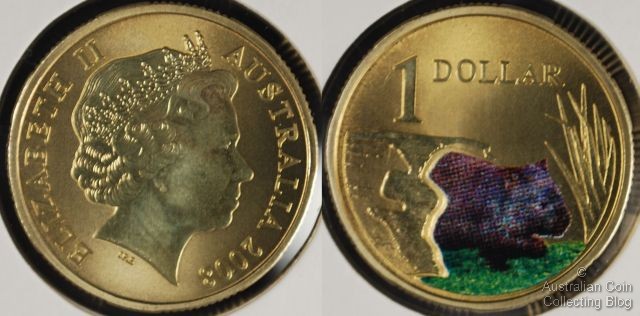
2008 Wombat One Dollar
2008 Uncirculated Koala
The Koala is seen perched in the fork of a Eucalypt tree munching on gum leaves. They are fussy eaters preferring only specific types of gum leaves. Koala's have 2 thumbs on their front paws to help them grip when climbing and eating. Koala's are one of only a few mammals (apart from primates) that have unique fingerprints similar to ours.

2008 Koala One Dollar
2009 Uncirculated Bilby
The Bilby is seen sheltering next to some spinifex grass. The Bilby is a type of bandicoot with soft grey fur, large ears and a black and white-tipped tail. They can be found in mulga shrubland and spinifex grasslands from sw Queensland to northern WA. Bilbies eat seeds, insects, bulbs, fruit and fungi. They live in burrows and have poor eyesight relying on their sense of smell to forage for food.
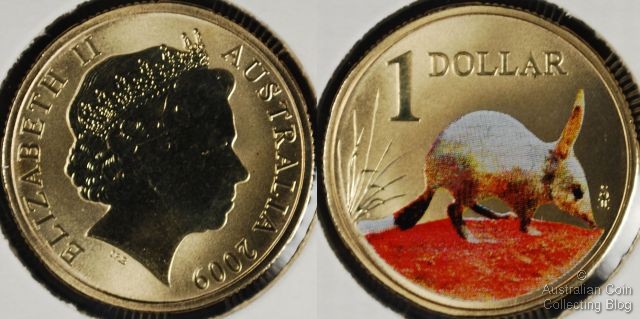
2009 Bilby One Dollar
2009 Uncirculated Frilled Neck Lizard
The Frilled Neck Lizard is shown sitting on a log with the sun and outward radiating circles representing the hot tropical climate where this lizard is found. This Australian native animal (previously found on the 2c piece) is a camouflage colour with a bright neck frill which it displays when alarmed or sensing danger. It hunts in trees for insects and on the ground for termites, ants, spiders and smaller lizards.
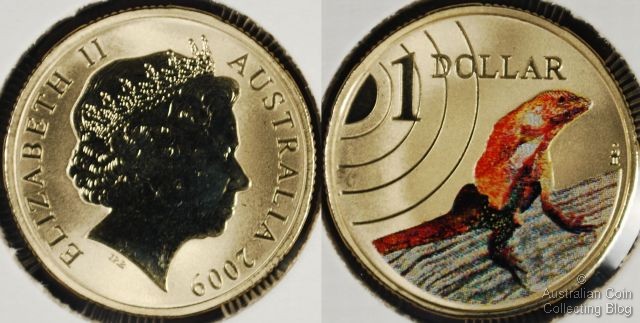
2009 Frilled Neck Lizard One Dollar
Posted by harrisk at November 7, 2009 12:34 PM
Subscribe to our Newsletter


